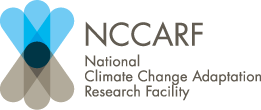You are here
Help! Lending a hand to vulnerable species
As Australian marine creatures head south in response to warming seas, researchers have identified a range of tools that can be used by councils to test adaptation options for particular species.
Global hotspots, such as the waters southeast of Australia, have warmed dramatically and dozens of marine animals have moved south. Many others need our help.
Dr Alistair Hobday, from CSIRO, says these sea temperature changes are clear – not only in the physical records, but also in the biology. ‘As the oceans have warmed, nutrient levels have changed, which is influencing productivity southeast of Australia,’ he says. ‘More than 100 species of fish and two dozen invertebrate species have moved south.’
With temperature rises having a dramatic impact, Alistair is investigating adaptation options for ecosystems as a whole, as well as individual species. In partnership with the Tasmanian Department of Primary Industries, Parks, Water and Environment, Alistair has investigated adaptation options for the shy albatross, a protected species that is in decline.
‘We sprayed albatross chicks with an insecticide to remove parasites, which increased chick survival rate by 10 per cent, and those that were treated were also heavier, which may increase their survival when they first head to sea,’ he says. ‘It was a simple intervention that gives them a chance to cope with warmer, wetter conditions conducive to parasites.’
Councils have threatened species to protect. ‘There are now a range of examples of these interventions for councils to draw on,’ he says.
Alistair has developed a set of tools that can help councils test species adaptation options to ensure they are affordable, institutionally allowable, and publicly acceptable. ‘We want to give conservation managers a set of tools they can practise with and can deploy’ he says. ‘It’s like being a plumber – you want a range of tools, and experience with those tools, to throw at a problem.’
What species in your region require your help?
Scientists have documented the impacts, shown future risk, and generated tools for testing adaptation options. Have you tested any of these tools?
Are there reasons why you haven’t been able to test tools to help species adapt?
zblf3muymcsrpwsb.png

More info: Hobday, A. J., L. E. Chambers and J. P. Y. Arnould (2015). Prioritizing climate change adaptation options for iconic marine species. Biodiversity and Conservation 24(14): 3449-3468 DOI 10.1007/s10531-015-1007-4 (http://link.springer.com/article/10.1007%2Fs10531-015-1007-4).




